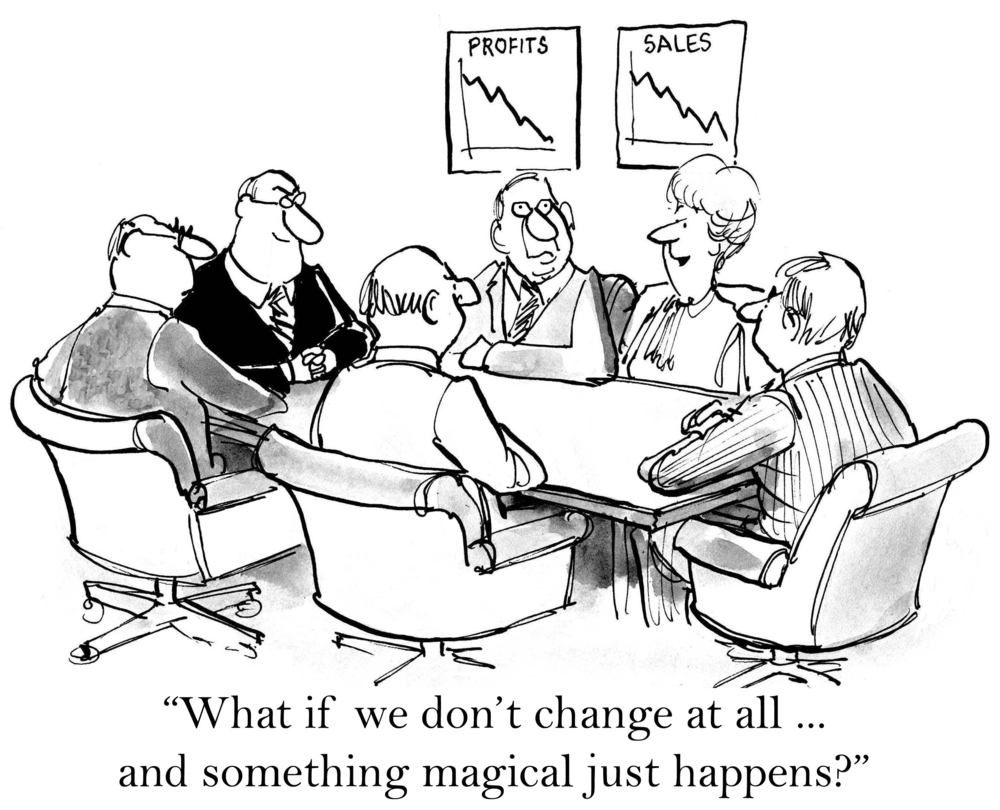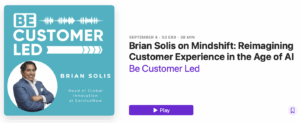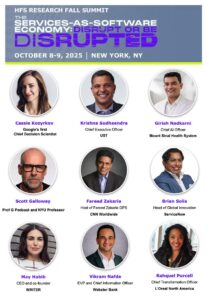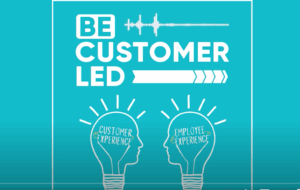I recently presented at event in San Diego. My goal in doing so was to help attendees reframe the problems they were trying to solve and introduce new opportunities that would help them go back to work and contribute to meaningful change.
I remember it being a beautiful day. The crowd was electric and more than open to new ideas. When I was done presenting, I playfully threw out that I would be outside on the patio (overlooking the San Diego Harbor) if anyone had any questions. To my surprise, there was a group of 25-30 or so people who followed. We continued the conversation outside and everyone seemed engaged with many staying until the last question.
Hannah Kovacs with Postbeyond was in attendance. After the event, she asked if we could talk about digital transformation, my latest research and the importance of the human element in change. My answer was, “of course!” It was a line in her bio that also added that extra layer of convincing, “obsessed with critical thinking and challenging the status quo.”
I wanted to share the interview the result of the interview with you here…I hope it helps you.
Hannah Kovacs: Why is it necessary for enterprises to design their customer experience? How has this changed in the last 10 years?
There’s this idea that companies need to change because the times are changing.
But then there are those innovative companies who want to be more beloved by a new generation of customers. Understanding what it takes to be successful in that regard means that you need to understand how people (your customers) are different than you previously thought. But also, it’s taking those insights and applying them to the infrastructure of your organization so that you can work differently and compete differently.
When you invest in technology and expertise for reasons other than being profitable, it shifts the perception and definition of success. This shift in perspective also shifts our view of what it means to “work.” It gives way for a new culture that’s entirely human-centered. And yet, there are so many companies who fail to see that opportunity.
HK: On that note, what would you identify as the biggest obstacle to enterprises who maybe want to go through a digital transformation, but are getting stuck?
One of the biggest obstacles is the sheer operational structure of organizations. They’re built on management infrastructures, which by nature are designed to support and reinforce existing paradigms. Within those management structures, you have a very human system of governance, which includes politics, ego, sabotage, etc. These traits define the culture of the company (which usually tends to be risk-averse). Everything that you reward, everything that you tolerate and refuse to accept – that’s your culture.
But there are individuals throughout the company who truly believe that there has to be a better way to operate. They have an innovative spirit, and they want to spread their ideas. The biggest question is whether they can push through the existing management structure before they leave the company.
This is why I emphasize the difference between leadership and management. When we look at employee engagement (or lack thereof) and what separates an innovative organization versus an organization that exists purely for profit, it comes down to the culture around progressiveness and experimentation.
HK: One of my favourite quotes of yours was: “We get so caught up in the game that we forget the bigger story we’re trying to tell, the more meaningful side of things” – would you care to elaborate on this?
Well whether it’s marketing, customer experience, employee engagement, or getting executive support, what it all comes down to is this: whether we know who we’re talking to, and whether we know what’s important to them.
We need to meet somewhere in the middle of what we’re saying and what people want to hear.
“This is just how we do things” is engrained in metrics and processes. “Doing it differently” means taking a risk – and this isn’t usually rewarded. In fact, it’s usually the opposite. Risk taking is frequently punished in some regards.
So we’re teaching people in the workplace to conform. This is the reason why you have employees who are disengaged at work. The leadership is generally unhappy, and it all sends the same message: we refuse or ignore the opportunity to change the dynamic of how people are communicating. It all comes down to culture and our ability (or inability) to feel like we can try new things.
HK: In five years from now, when many enterprises have gone through and completed the “digital transformation” we call it, what comes next?
I don’t believe that any company is going to achieve a full digital transformation simply because technology continues to advance and we’re not done evolving as a society.
If we look at the 6 Stages of Digital Transformation, the final stage is being in a state of constant innovation and adaptation. It’s an organization state which has elements within the infrastructure of active innovation. It would mean entire teams dedicated to digital transformation and innovation who ensure that processes are constantly becoming more customer-centric.
But it’s ongoing. You’ll still have challenges of bringing new ways of working to the company. Or you may have pockets of people who don’t fully understand the need to support innovation.
The key understanding is that change is constant now. You’ll always be working inside of the organization to create relevance.
I think the closest you get to the ability to remain relevant is how you invest in culture. I don’t believe that companies fully appreciate culture yet. It’s still a soft, squishy subject. We pay more attention to transactions, reports, results, earnings – but we don’t understand the human dynamics that govern those issues or how they’re relatable to the outside.
Understanding how to invest in a culture that still allows you to achieve those results is important, of course. But, without empowering people and changing standards to encourage upward mobility among employees, you cannot truly innovate. It is how you build an empowered dynamic that will lead to a full transformation.
Delivering value to shareholders is just one aspect of a successful business. When we think of brands that have failed to embrace disruption (Blockbuster, for example), the emphasis became too focused on earnings reports rather than focusing on the customer and employee experience.
To be a shareholder now means that you have to be a stakeholder, too. What’s good for customers and employees in the long run might look like a dip in profitability for the short term. But that’s what yields greater returns in the future. Unfortunately, some shareholders still don’t see it this way. Shareholders in some instances are dead weight.
HK: In your opinion, what has been the most profound, technological impact on the business world to date?
I speak a lot about Digital Darwinism, which is technology and society as they evolve. When we look at desktop PC’s, the internet, mobile phones, social media – these have all had their respective impact on business and society.
Even though businesses are making strides in the right direction, they haven’t changed how they see these technologies impacting the societal front. Change is slow and the purpose of why you’re changing is often just determined by the technology itself (hence CX, social media, martech and teams that lead to CX, social media and martech conferences, et cetera.) But we’re not really doing anything new! We’re developing ways to use the existing stuff to manage people and information the same old ways.
The minute we understand there’s a greater purpose for technology and platforms, what we actually do within these channels, and what impact they have on people and expectations, that’s when that strive to change becomes purposeful and accelerated. It brings a true competitive advantage.
Innovation starts with you.
I’ve also included an index of my research on these subjects to further help you…
Digital Transformation
The Six Stages of Digital Transformation
8 Success Factors of Digital Transformation
The State of Digital Transformation 2014
Digital Transformation: Why and How Companies are Investing in New Business Models
Innovation
The Innovation Game: Why and How Businesses are Investing in Innovation Centers (with Capgemini Consulting)
Digital Dynasties: The Rise of Innovation Empires (with Capgemini Consulting)
How to Build a Culture of Innovation Part 1
How to Build a Culture of Innovation Part 2
Connect with Brian!
Twitter: @briansolis
Facebook: TheBrianSolis
LinkedIn: BrianSolis
Youtube: BrianSolisTV
Snapchat: BrianSolis
Experience is everything…read my new book, X!






2 COMMENTS ON THIS POST To “5 Questions Defining the State and Future of Digital Transformation”